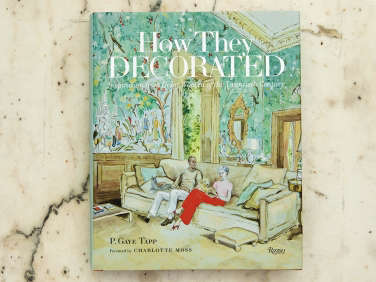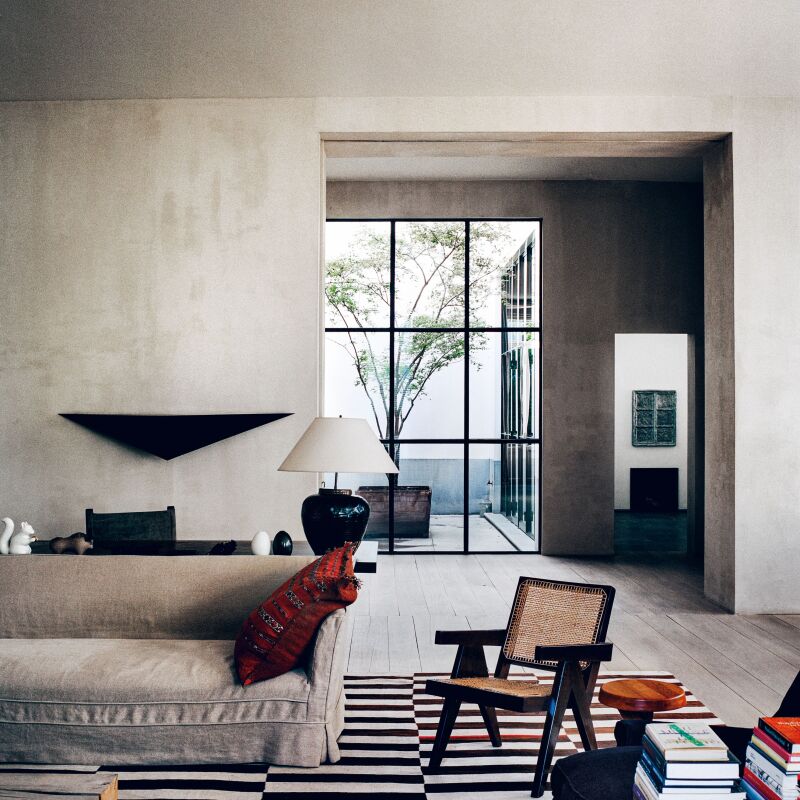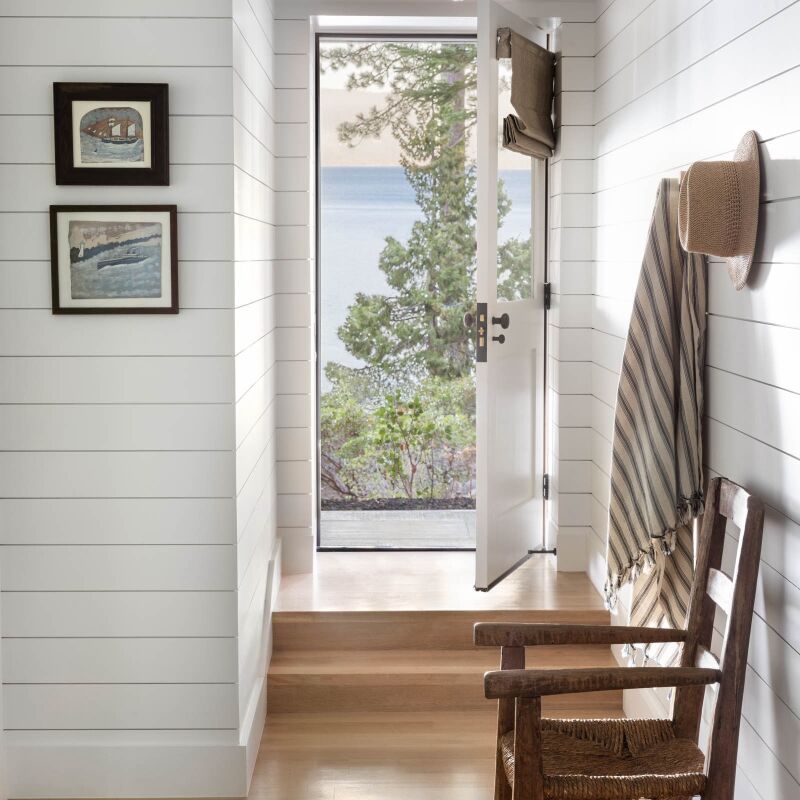Flicking through a vintage magazine can start well: the fabulous cover, the glamorous ads. But all too soon attention wanders, until finally—color!—in the form of wonderful photos of the freshly decorated home of someone with six names. Fortunately, the renowned blogger and design detective P. Gaye Tapp has done the hard work for us, collecting her findings from a lifetime of magazine flicking in a charming book: How They Decorated: Inspiration from Great Women of the 20th Century.
Photography by Jim Powell for Remodelista.

An aphorism of Gloria Vanderbilt sets the tone: “Decorating is autobiography.” This is amply illustrated by the lifestyle of the extravagantly nomadic author Lesley Blanch (1904-2007). Her hobbies included embroidery; as she moved from house to house, she depicted her travels on cushions, scattering every surface with them: “Ah! Needlework,” she cried, “thy name is nostalgia.”
Like several of the women in this book, Blanch (best known for her book The Wilder Shores of Love) decorated herself and her houses with equal enthusiasm, “often matching the color of her wardrobe to a particular room,” notes Tapp. Blanch was an enthusiastic shopper, carrying everything, snail-like, from one continent to the next.

Each entry in How They Decorated begins with full name, life span (uniformly long), and a potential epitaph: “The glamorous Gabrielle Andrée Iglesias Valayas van Zuylen (1933-2010) lived in a rarefied world of haute luxe.” By the end we know that van Zuylen also became an accomplished gardener under the tutelage of British landscaper Russell Page (who had a similar effect on Marella Agnelli) and wrote a definitive volume, The Gardens of Russell Page. Indoors, once van Zuylen had spotted the work of François Catroux in New York, she knew she’d found the perfect collaborator for her modern rooms in Paris and Normandy.

Van Zuylen was vehemently anti-clutter; she took old places and gave them streamlined, almost futuristic interiors. Yet in her Paris bedroom the opposite was true, a final refuge for personal photos, Louis Quatorze chairs, and chintz. As van Zuylen said, “The whole key—in clothes, in life—is contrast and variety.”

Dominique Schlumberger de Menil (1908-1997) was an art collector and social reformer, with her husband Baron Jean de Menil. They lived part-time in a house designed by Philip Johnson in Houston, Texas. Having rejected the suggestions of the architect, Dominique appointed her favorite clothes designer as her decorator: Charles James. It was his only house assignment. “Charlie was impossible,” she later said. “But all that mattered was that he was a genius.”

Is there anything about the long-lived Georgia O’Keeffe (1887-1986) that we don’t know? And yet, further documentation is always welcome. She was most definitely an artist, not a decorator, and would have had a quarrel with her inclusion in this book, though it is ostensibly about great women. O’Keeffe is the greatest of the great women and her ultra-simple style has proved the most timeless. She founded Ghost Ranch when married to the photographer Alfred Stieglitz and would rent it every summer, as her solitary retreat. After the death of Stieglitz, she persuaded the owner to sell, so that she could develop the series of buildings to better suit her work and her ideas. Ghost Ranch had nothing to do with fashion, or decorators, or art dealers: It was an expression of O’Keeffe’s inner life and art.

As well as classic modernist accessories, such as an Eames chair and a mobile by Alexander Calder, O’Keeffe chose unexpected black patent leather curtains for her bedroom (above right).

By way of contrast, clothes designer Pauline Trigère (1908-2002) expressed her sense of self in a way that seems rather outrageous now, and very much of its time (the 1970s and 1980s). “Every inch of Trigère’s second guest room at La Tortue, the designer’s country house in Westchester County, New York, was covered in a signature Trigère print.” Except, mercifully, the ceiling.

- The Socialite Family Book: Lifestyles of the Young and Chic, French Edition
- Required Reading: Perfect French Country, Inspirational Interiors from Rural France
- Required Reading: Freemans Food & Drink by Taavo Somer
Frequently asked questions
What is the book Decorated: Inspiration from Great Women of the Twentieth Century about?
Decorated: Inspiration from Great Women of the Twentieth Century is a book about the lives, homes, and decorating styles of some of the most remarkable women of the 20th century.
Who are some of the women featured in Decorated?
Some of the women featured in Decorated include Diana Vreeland, Gloria Vanderbilt, Bunny Mellon, and Iris Apfel, among others.
What can I expect to learn from reading Decorated?
Reading Decorated will give you a glimpse into the lives and style of some of the most influential and creative women of the 20th century, as well as provide inspiration for decorating your own home.
Is Decorated only for women readers?
No, Decorated is not only for women readers. The book provides valuable insight and inspiration for anyone interested in design, fashion, and the lives of creative individuals.
Can I purchase Decorated online?
Yes, you can purchase Decorated online through various retailers such as Amazon or Barnes and Noble.






Have a Question or Comment About This Post?
Join the conversation